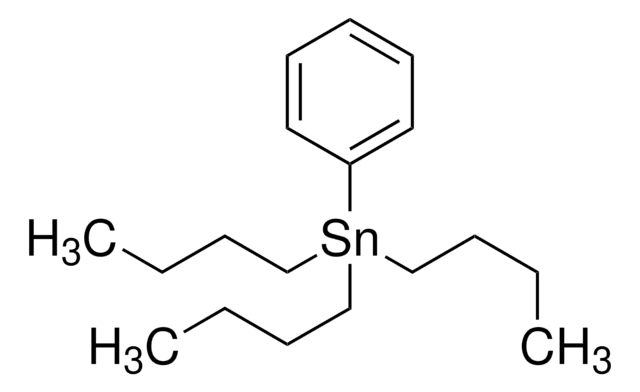Kluczowe dokumenty
T26727
Tetraphenyltin
97%
Synonim(y):
Tin tetraphenyl
About This Item
Polecane produkty
gęstość pary
14.7 (vs air)
Poziom jakości
Próba
97%
tw
>420 °C (lit.)
mp
224-227 °C (lit.)
ciąg SMILES
c1ccc(cc1)[Sn](c2ccccc2)(c3ccccc3)c4ccccc4
InChI
1S/4C6H5.Sn/c4*1-2-4-6-5-3-1;/h4*1-5H;
Klucz InChI
CRHIAMBJMSSNNM-UHFFFAOYSA-N
Szukasz podobnych produktów? Odwiedź Przewodnik dotyczący porównywania produktów
Hasło ostrzegawcze
Danger
Zwroty wskazujące rodzaj zagrożenia
Zwroty wskazujące środki ostrożności
Klasyfikacja zagrożeń
Acute Tox. 3 Dermal - Acute Tox. 3 Inhalation - Acute Tox. 3 Oral - Aquatic Acute 1 - Aquatic Chronic 1
Kod klasy składowania
6.1C - Combustible acute toxic Cat.3 / toxic compounds or compounds which causing chronic effects
Klasa zagrożenia wodnego (WGK)
WGK 3
Temperatura zapłonu (°F)
231.8 °F - closed cup
Temperatura zapłonu (°C)
111 °C - closed cup
Wybierz jedną z najnowszych wersji:
Masz już ten produkt?
Dokumenty związane z niedawno zakupionymi produktami zostały zamieszczone w Bibliotece dokumentów.
Klienci oglądali również te produkty
Nasz zespół naukowców ma doświadczenie we wszystkich obszarach badań, w tym w naukach przyrodniczych, materiałoznawstwie, syntezie chemicznej, chromatografii, analityce i wielu innych dziedzinach.
Skontaktuj się z zespołem ds. pomocy technicznej


